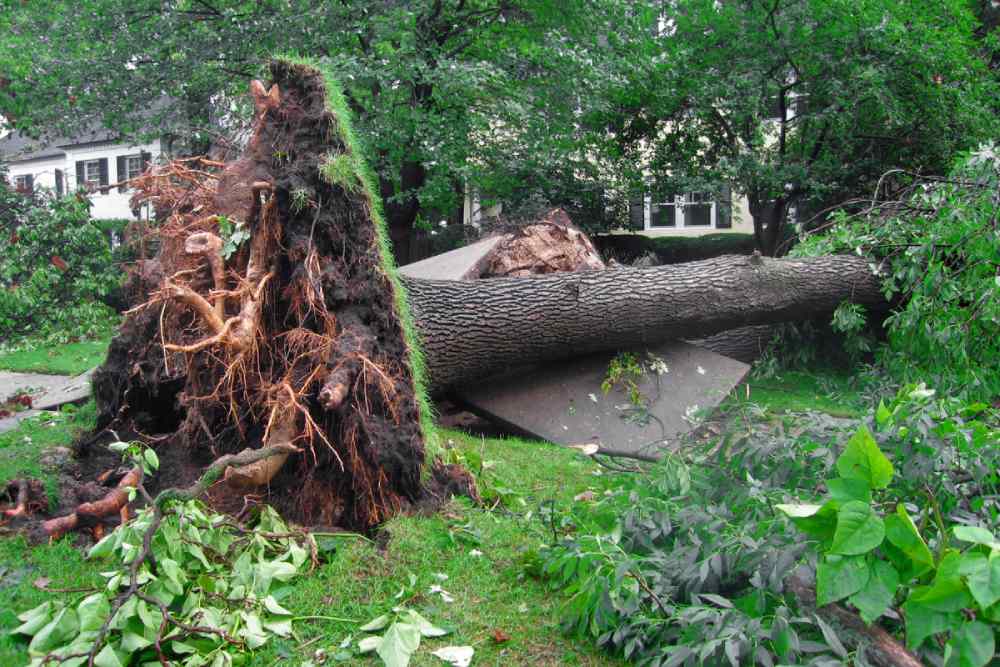
Tree care professionals of Georgia talk about how to care for an uprooted tree.
There is Hope for Your Uprooted Tree
Whether it is the large sturdy oak where kids’ swing is tied or the lovely dogwood tree that has been tenderly cultivated for its gorgeous spring blooms, trees are a significant part of our daily lives. They provide food, beauty, shade and privacy for both people and animals. Because trees last such a long time, people may grow as fond of the sight of a particular tree as they would of a favorite building. If something happens to the tree and a storm knocks it over, there is more at stake than just aesthetics. There is a chance, however slim, that the tree can be saved.
What Makes Trees Uproot?
While it is easy to observe that an uprooted tree is typically the result of high winds due to thunderstorm activity or similar weather, this is only the final strike against the tree. There are many other circumstances that contribute to the tree’s susceptibility to being uprooted. Changes in soil and in the health of the tree itself are significant contributors to possible failure. Here are a few specific examples that would fall into these categories:
- Erosion
- Fungal Infection
- Pest Infestation
- Change in Soil Composition
- Tree Age
- Size and Weight of the Tree Crown
- Soil Saturation (too much water)
Can the Uprooted Tree Be Saved?
Often, if a tree is uprooted, that is the end of its life. Eighty percent of a tree’s roots are in the top eighteen inches of soil. This means that if the tree is yanked up by the wind, there will be a lot of severed roots, even if the tree appears to be mostly intact. This means the tree may not be able to get enough nutrients even if it were possible to pick the tree up and put it back in place. Larger, older trees are less likely to survive an uprooting, but younger smaller trees may be able to be recovered. Here are a few tips for preserving the uprooted tree:
- Roots: Cover the exposed roots with dirt to keep them from drying out. The summer sun can kill a tree in a single day.
- Pruning: Prune the dead and broken branches.
- Replanting: When returning the tree to the soil, try to keep the tree straight without twisting or turning it. This can cause further root damage.
- Stabilize: Press the dirt firmly around the base of the tree
- Water: Make sure the tree gets plenty of water in order to avoid transplant shock.
While all these things are good to do, the best advice is to call the professionals to do the job.
Consulting with an Arborist
The best way to ensure your tree’s survival is to consult an arborist and allow them to take care of the tree. Remember that a tree service company is about more than tree removal or tree trimming; they are also about tree and plant health care. If a homeowner consults with them before the tree is downed, the arborist may be able to prevent the worst through a tree risk assessment.
About Boutte Tree Service
Serving Atlanta, GA and the surrounding areas for nearly two decades, Boutte Tree Service believes in the power of trees to change the urban environment for the better. Call us today for reasonable rates and an eye toward the future.
